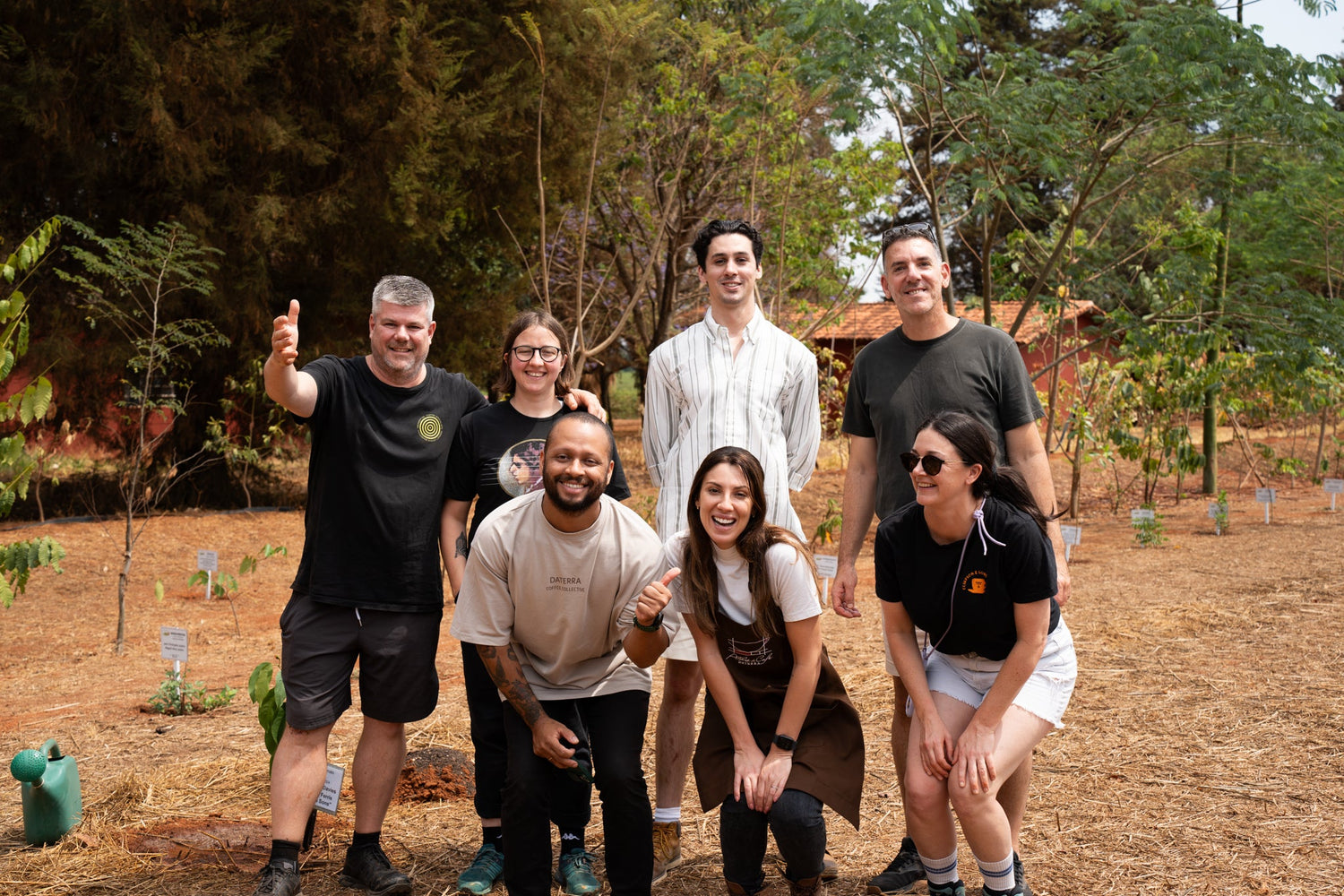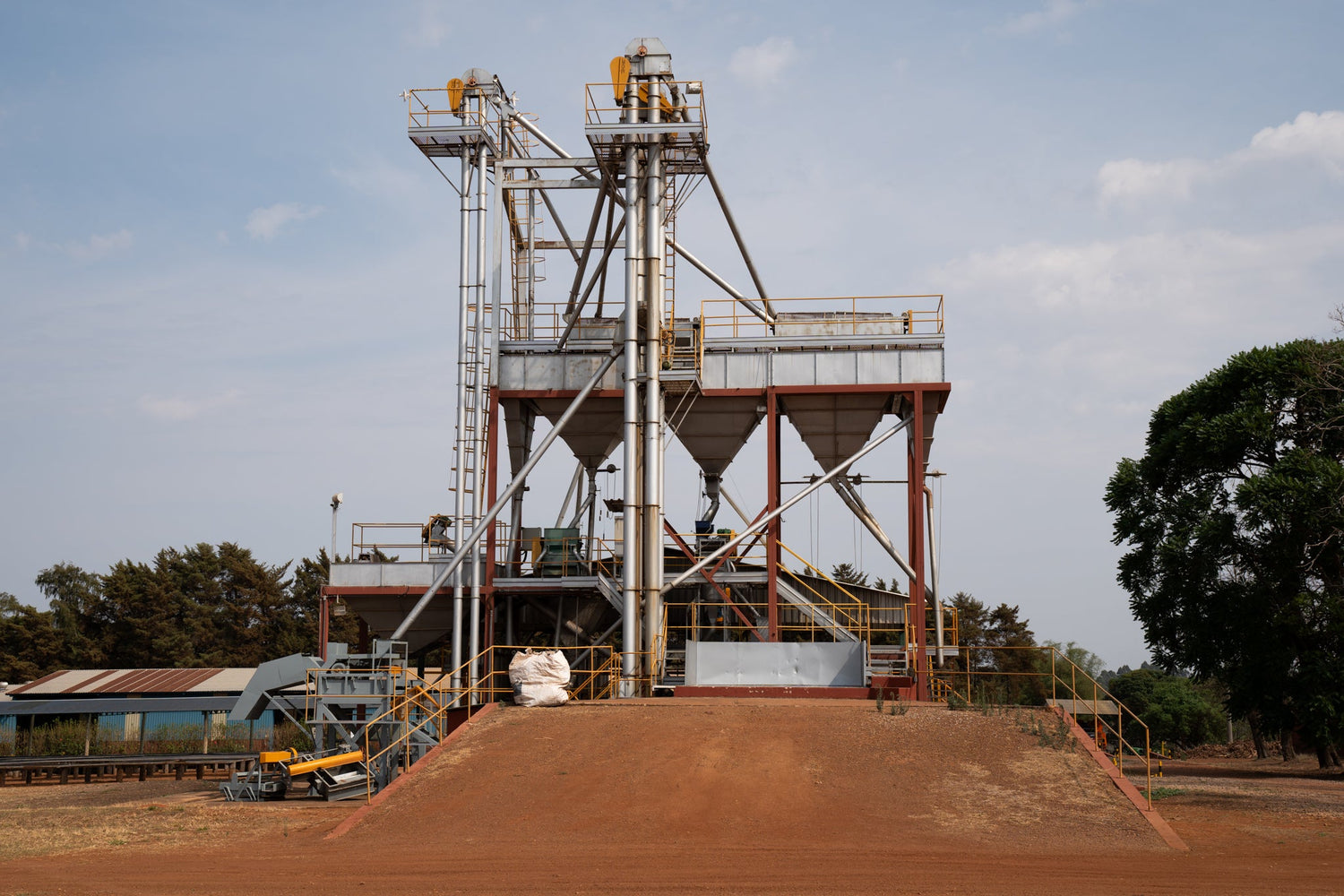We’ve conducted an experiment - so that you don’t have to - by brewing the same coffee four different ways, to study how different brew methods develop or highlight different coffee characteristics.
So, which coffee will we be brewing four different ways? It can only be this exciting natural from Myanmar - which happened to be our first ever coffee from Myanmar and a strong contender for staff favourite. This is the perfect candidate as it’s a.) delicious, b.) a natural and bursting with flavour, and c.) each brew method brings out something different and interesting.
For each of the four brew methods, we’ll provide a recipe, quick brew instructions (full brew guides including videos here) and our impressions - while the tasting notes may be similar, some methods will highlight different flavours and both body and acidity will see big changes.
Note: annoyingly, there isn’t a universal grind size from say 1 - 10, so instead of giving a grind setting, we will provide a guide on how coarse or fine it should be.
Hario V60
Recipe: 20g coffee. 320ml water. 2:30 extraction.
Grind the coffee fine-medium. Place the filter paper in the V60 and wet the filter paper to remove any papery taste - discard this water. Pour 60ml over coffee and let bloom for 30 seconds, then pour additional water to 220ml, at 1:10 complete the pour. Pour the remainder to 320ml, aiming for a total extraction time of 2:30.
Result: very light or ‘clean’ on the palate. It is flavourful and juicy. Some acidity present but in a pleasant way. Prominent fruity notes.
Compared to others: the V60 brew is the ‘lightest’ on the palate, with V60 you will be able to detect the most acidity (in a pleasant way), and more fruity notes. So adding milk might not be the best way to go with this brew
Aeropress
Recipe: 15g 15g coffee, 220ml water, using the inverted method, 1:00 steep and 0:40 plunge.
Medium grind (finer than cafetiere), pour the water and stir twice, place the filter paper in the Aeropress cap and wet the filter paper to remove the papery taste. Place the cap into place on the Aeropress and gently press to remove any air in the chamber (stop just before any liquid comes out), ‘flip’ or invert the Aeropress, allow to brew for 1:00, and plunge for 40 seconds.
Result: strong notes of strawberry, and herbs like rosemary. The big selling point here is that it has a bolder/heavier and creamier mouthfeel.
Compared to others: fuller body but cleaner and lighter than the cafetiere with more flavour clarity.

Cafetiere
Recipe: 20g coffee, 320ml water, 8:00 total brewing time.
20g coffee, ground medium-course. Pour 320ml of water over coffee and pop lid on - but resist the urge to plunge. At 3:30 remove the lid, loosen the crust by giving it a stir with a spoon and spoon out any crust that may be floating at the top. At 4:00 pop the lid, and let steep for an additional 4:00 minutes (so that the total brew time will be 8:00). Plunge slowly and only half-way so as to not disturb the grounds - this will result in fewer particles in your cup.
Result: sweet aroma, heavy mouthful, big body flavour, but earthier. The big body cancels out the flavour a little.
Note: cafetieres are known to result in an earthier taste, but the Espro Press cafetiere has a patented double micro-filter that helps avoid any of the coffee grounds ending up in the final cup.
Clever Dripper
Recipe: 20g coffee, 320ml water. 1:30 steep and 1:30 filter.
Coffee should be ground coarse. Pour 320ml of boiled water over the ground coffee, cover with the clever dripper lid at 1:30min. With a spoon, break the crust that’s floating and stir 3 times. Place on top of the vessel (mug) and let drain, aim for drip time of 1:30.
Result: light and ‘clean’ on the palate, sticky sweetness and herbal notes stand out.
Compared to others: It is light and clean, while retaining body. here the trade-off begins between flavour and body, but the The clever dripper is great in that it allows for the coffee to be steeped and filtered giving it both body and fruity notes.
Conclusion:
Coffee is a wondrous thing and affected by a range of different variables. One slight change in your brewing can have surprising consequences. By comparing the different brewing methods above, we have demonstrated the expected effect on your final cup ie. flavour, body, acidity.
We chose our Ywangan, Myanmar (natural) as it is a beautifully distinctive coffee, making it easier to be able to understand and differentiate the flavours.
What’s “the best” brew method? Well, that’s really a mixture of your personal preference and which will do the coffee justice. For example, for this particular coffee, we found that the Aeropress was the best suited to bring out the coffee’s creamy body while retaining its juicy sweet flavours. However, we also demonstrated that the cafetiere produced a bolder and the most full-bodied coffee, while the V60 delivered the lightest body with the most flavour. Here we see the trade-off between different flavour and body. It’s a science experiment in your mouth.






